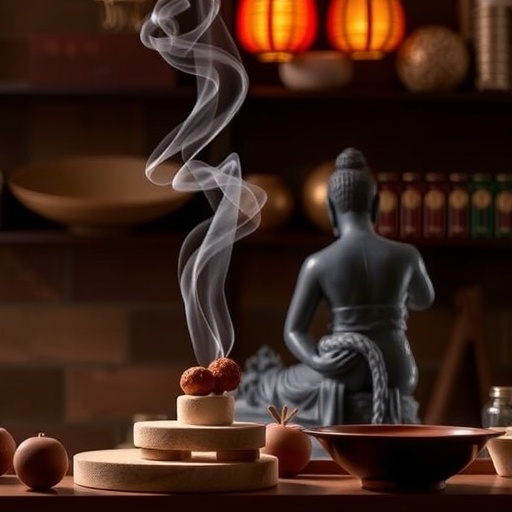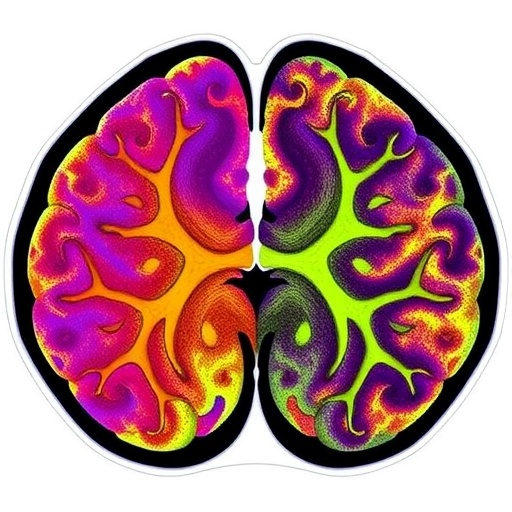The ancient practice of moxibustion, a traditional Chinese medicine technique that involves burning the herb mugwort near acupuncture points on the body, has long been a topic of interest for its therapeutic benefits. With a growing inclination towards holistic health techniques globally, recent studies have sought to unpack the feasibility and barriers associated with the application of moxibustion therapy in various regions, particularly in urban settings like Hong Kong. A new qualitative study spearheaded by researchers including Chen, S.C., Pang, L.Y., and Gao, J.Y. sheds light on the intersection of traditional healing practices and modern medical frameworks, revealing intriguing insights into societal perceptions and practical obstacles.
As urbanization accelerates in places like Hong Kong, the preferences of residents regarding health management and wellness practices are evolving. This study focuses on how people in this bustling city view moxibustion therapy, a method that has its roots deeply entrenched in ancient Chinese culture. By employing qualitative methodologies, the researchers engaged with participants to gather nuanced perspectives, thus highlighting a collective attitude towards the practice that ranges from acceptance to skepticism.
Respondents in the study yielded insightful narratives that depicted their levels of access to traditional therapies like moxibustion. While many acknowledged the potential benefits of moxibustion—such as pain relief, improved circulation, and enhanced overall wellness—others voiced concerns about its safety and efficacy. The study’s findings indicate that a significant segment of the population harbors misconceptions surrounding the practice, partly due to limited knowledge about its scientific underpinnings and therapeutic effects.
The researchers further examined the practical barriers that inhibit the successful integration of moxibustion into broader healthcare practices. A recurring theme was the lack of regulation and standardized training for practitioners, which raises questions about treatment quality and consistency. Participants expressed fears about the competency of some moxibustion providers, which complicates their willingness to pursue this alternative therapy. Consensus among interviewees suggested that without more robust governance and education, moxibustion may struggle to gain widespread acceptance in Hong Kong.
Moreover, the dynamics between Western medicine and traditional practices like moxibustion were also a focal point of this qualitative study. Participants articulated a desire for more integrative approaches to health that respect traditional modalities while also being anchored in evidence-based practices. There emerged a sentiment that collaboration between traditional healers and modern medical practitioners could pave the way for enriched patient care, ultimately leading to a more holistic approach to health management.
The push for integration is heightened by an evolving public health landscape wherein individuals increasingly seek alternatives to pharmaceutical solutions, often in the quest for reduced side effects or more natural interventions. As healthcare challenges persist globally, the relevance of alternative therapies grows, demanding a reconsideration of how practices like moxibustion are perceived and utilized within contemporary healthcare frameworks.
This qualitative exploration provides a contextual understanding of how moxibustion is situated within the healthcare tapestry of Hong Kong. Notably, findings indicate that cultural factors, including traditional beliefs and values, play a crucial role in shaping individual decisions related to health practices. The study elucidates that while Western paradigms predominantly inform health decisions in urban environments, traditional therapies like moxibustion still hold particular allure when viewed through the lens of cultural identity and nostalgic healing practices.
Despite the obstacles, the study provides a glimmer of hope for proponents of moxibustion therapy. Various participants expressed a willingness to learn more about the procedure, suggesting that increasing awareness and education could serve as catalysts for transforming perceptions. Social media and community workshops were cited as potential platforms for disseminating information about moxibustion, underscoring an emerging interest in alternative therapies among younger demographics, in particular.
The challenges identified, while significant, are not insurmountable. Researchers argue that continued dialogue and education surrounding moxibustion could mitigate concerns related to its safety and efficacy. Engaging practitioners in creating standardized guidelines and training programs could not only enhance the quality of moxibustion services but also foster greater public trust in its application. Furthermore, partnerships with educational institutions could pave the way for academic courses focused on traditional medicine, enriching the healthcare dialogue globally.
Ultimately, this study encapsulates the nuances of connecting the past with the future within the realm of healthcare. The prospect of integrating moxibustion therapy into the fabric of modern medical practices is complex but replete with possibilities. As practitioners and researchers work together to bridge the gaps, the hope is that moxibustion could be recognized not just as an alternative but as a complementary aspect of comprehensive health management strategies.
In conclusion, the research on the feasibility and barriers of moxibustion therapy sheds light on critical public health issues in urban environments. It prompts a deeper inquiry into how societies value traditional practices, as well as the necessity for regulatory frameworks that enhance the safety and efficacy of alternative therapies. With continued research, education, and functional collaborations, moxibustion may well find its rightful place alongside conventional medical practices, benefitting those who seek holistic healing options.
Subject of Research: Feasibility and barriers of utilizing moxibustion therapy in Hong Kong
Article Title: Feasibility and barriers of utilizing moxibustion therapy in Hong Kong: a qualitative study
Article References:
Chen, S.C., Pang, L.Y., Gao, J.Y. et al. Feasibility and barriers of utilizing moxibustion therapy in Hong Kong: a qualitative study.
BMC Complement Med Ther 25, 391 (2025). https://doi.org/10.1186/s12906-025-05136-x
Image Credits: AI Generated
DOI: https://doi.org/10.1186/s12906-025-05136-x
Keywords: Moxibustion, Traditional Chinese Medicine, Hong Kong, Alternative Therapies, Health Integration, Qualitative Study.
Tags: acceptance of moxibustion therapybarriers to alternative therapieschallenges of traditional Chinese medicinehealth preferences in urban settings.integration of traditional and modern medicineMoxibustion therapy in Hong Kongopportunities for holistic health practicesqualitative research on moxibustionskepticism towards traditional healingsocietal perceptions of moxibustiontherapeutic benefits of mugworturbanization and health management






